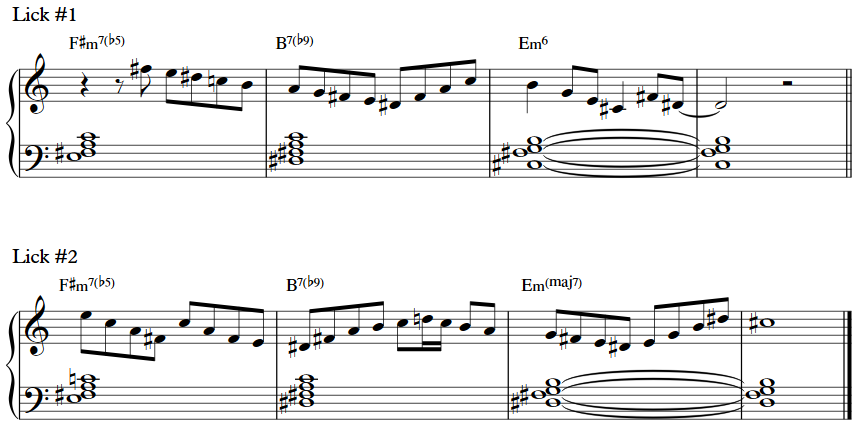
The jazz standard “Autumn Leaves” has been recorded by many popular jazz artists and is widely recognized by listeners, making it a “must-know” tune that should be in the repertoire of advancing jazz players.
In this article, learn three tips for how to approach this tune to help you be fully prepared in a jam session.
Tip #1: Learn this tune in two particular keys.
“Autumn Leaves” is generally played in one of two keys: G minor or E minor. Popular fake books generally notate the tune in one of these two keys. Both keys are frequently called on jam sessions, so be ready.
Check out our “Autumn Leaves” lesson which will teach you a model solo using left hand rootless voicings and analyzes various aspects of how to build a solo over the chord changes. This lesson teaches the song in the key of E minor.
Tip #2: Understand the harmonic and melodic minor and use them when soloing over the minor “i” chord.
Many jazz students get into the habit of using the dorian mode to solo over minor chords within jazz standards. This is understandable because so often we encounter minor chords as part of a “ii-V-I” progression. Within that progression the minor “ii” chord corresponds to the dorian mode. Because of this, developing jazz players commonly use the dorian mode as the chord scale of choice for soloing over all minor chords. In “Autumn Leaves” the minor chord in measures 7 and 8 is not the “ii” chord in a “ii-V” progression, but rather the “i” chord and therefore the tonic.
Let’s look at this tune in the key of E minor. The first 4 measures go through a “ii-V-I-IV” progression in G major, the relative major of E minor (Am, D7, Gmaj, Cmaj). The next 4 measures are a “ii-V-i” in E minor (F#m7b5, B7, Em).

The important thing to notice here is that the E minor chord is the “i” chord! If we use E dorian or E natural minor to solo over the Em chord, we miss out on an all-important note – the leading tone. The leading tone is the major 7th, or a half-step below the root. Including the leading tone in our E minor scale gives us the D#, an important note for building the chord that leads to E minor, the B7.

Advanced players know that the harmonic and melodic minor scales create much more tension and resolution when soloing over the minor “i” chord. Try soloing using the E harmonic or melodic minor scale (both of which contain the leading tone) and notice the difference in sound. Also, be sure to adjust your left-hand voicing to include a major 7th or major 6th (as opposed to a minor 7th which would be the case in a dorian voicing).
Tip #3: Learn a couple licks to solo over the minor “i” chord that use the harmonic/melodic minor scale.
We want to help get things rolling as you use this new sound of the harmonic/melodic minor scale in your playing. Having a couple licks that you can practice is always a great place to start.


